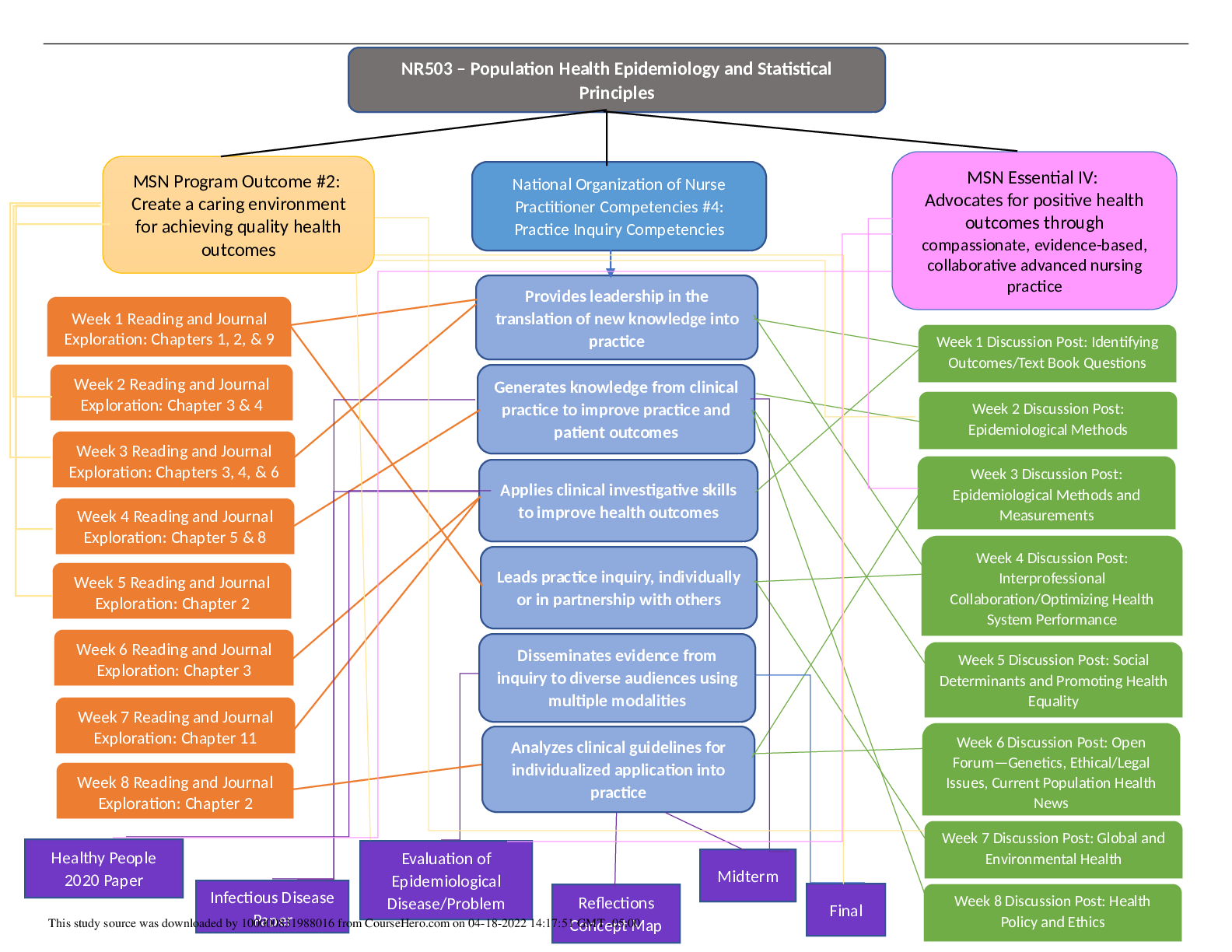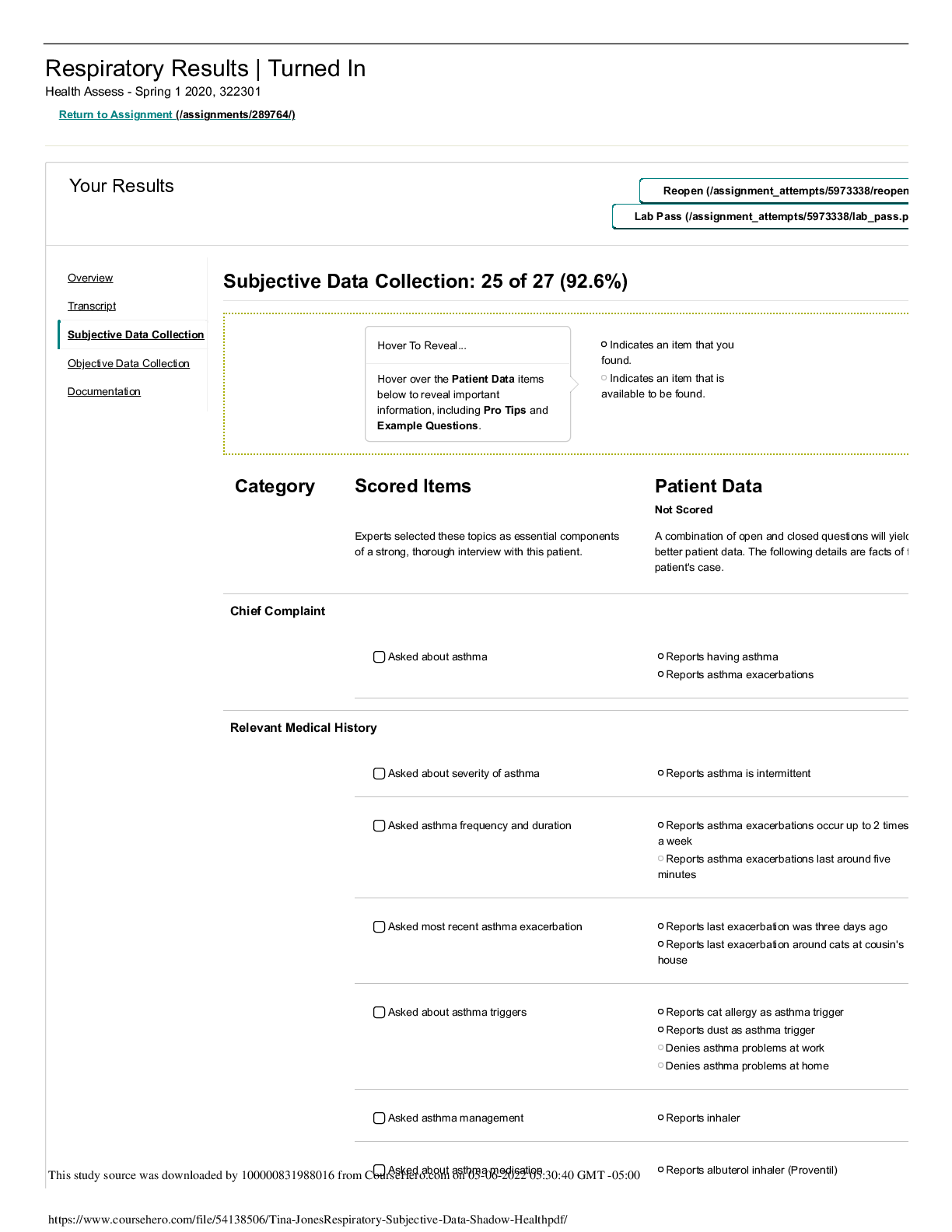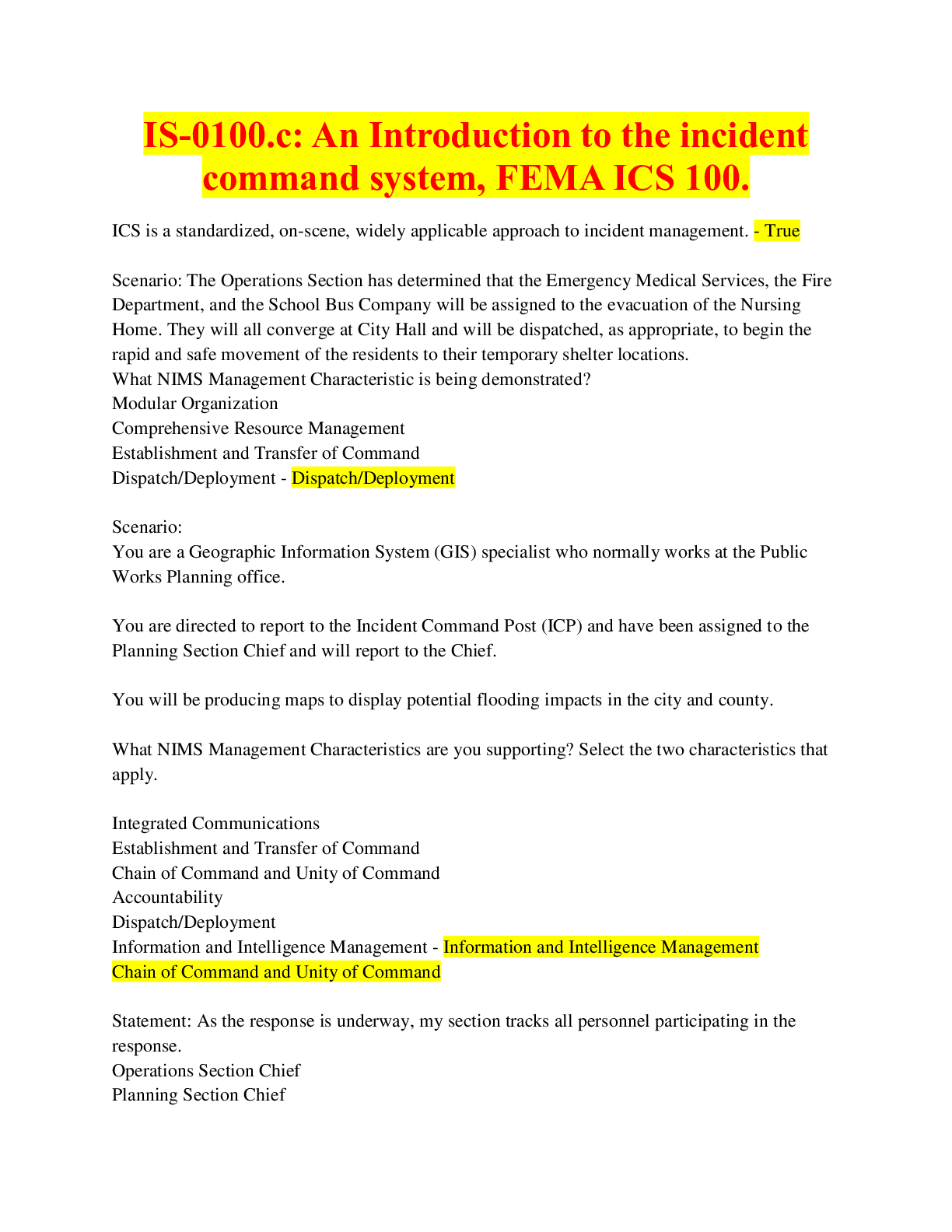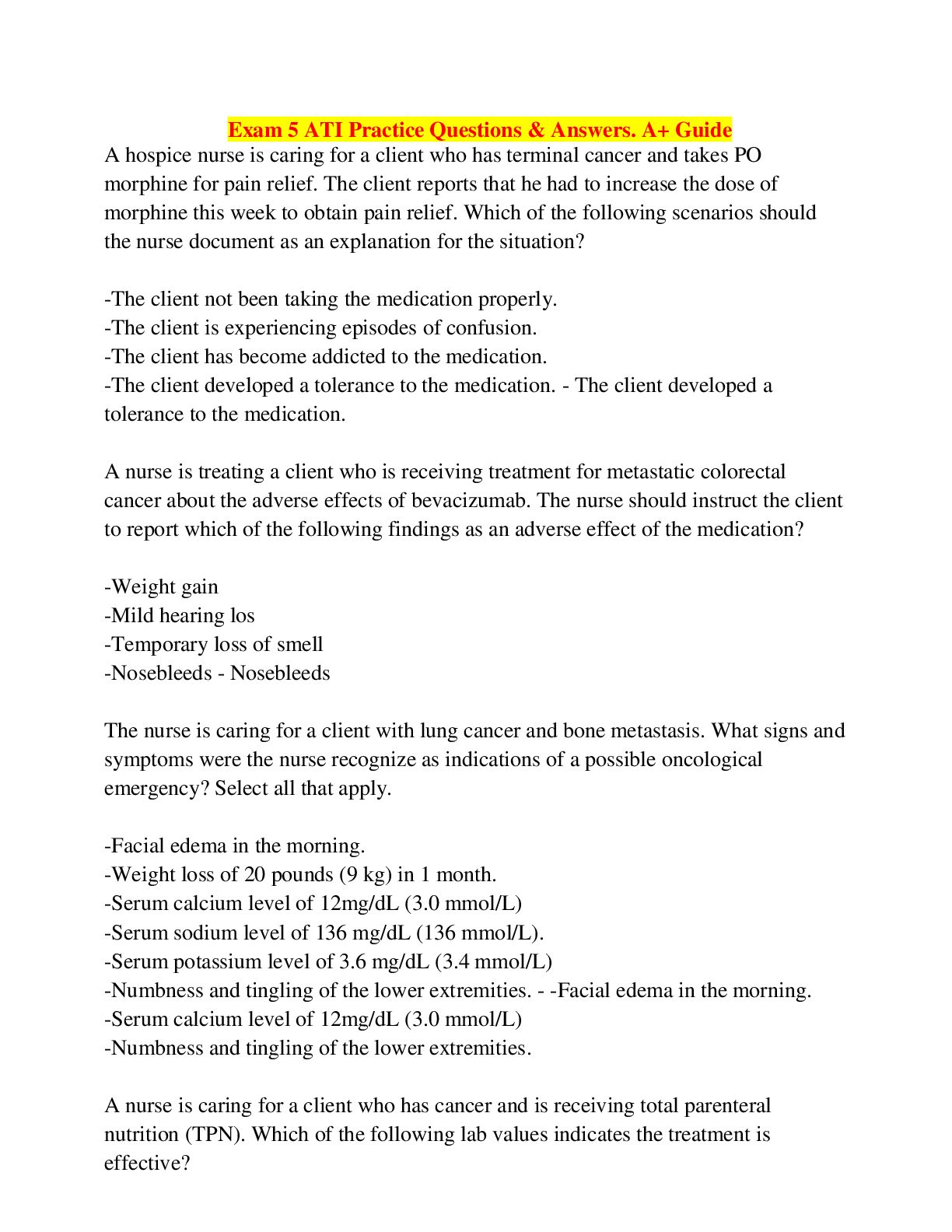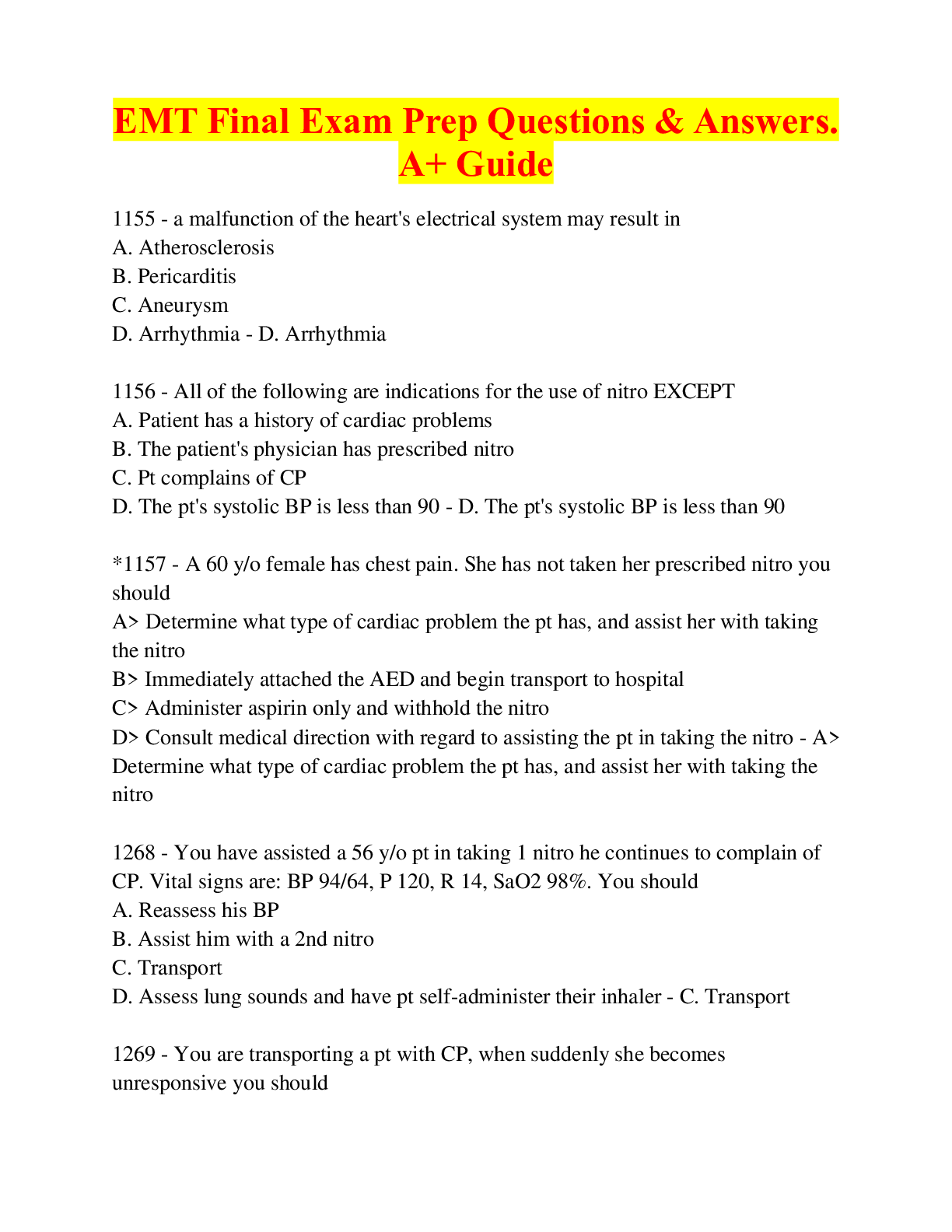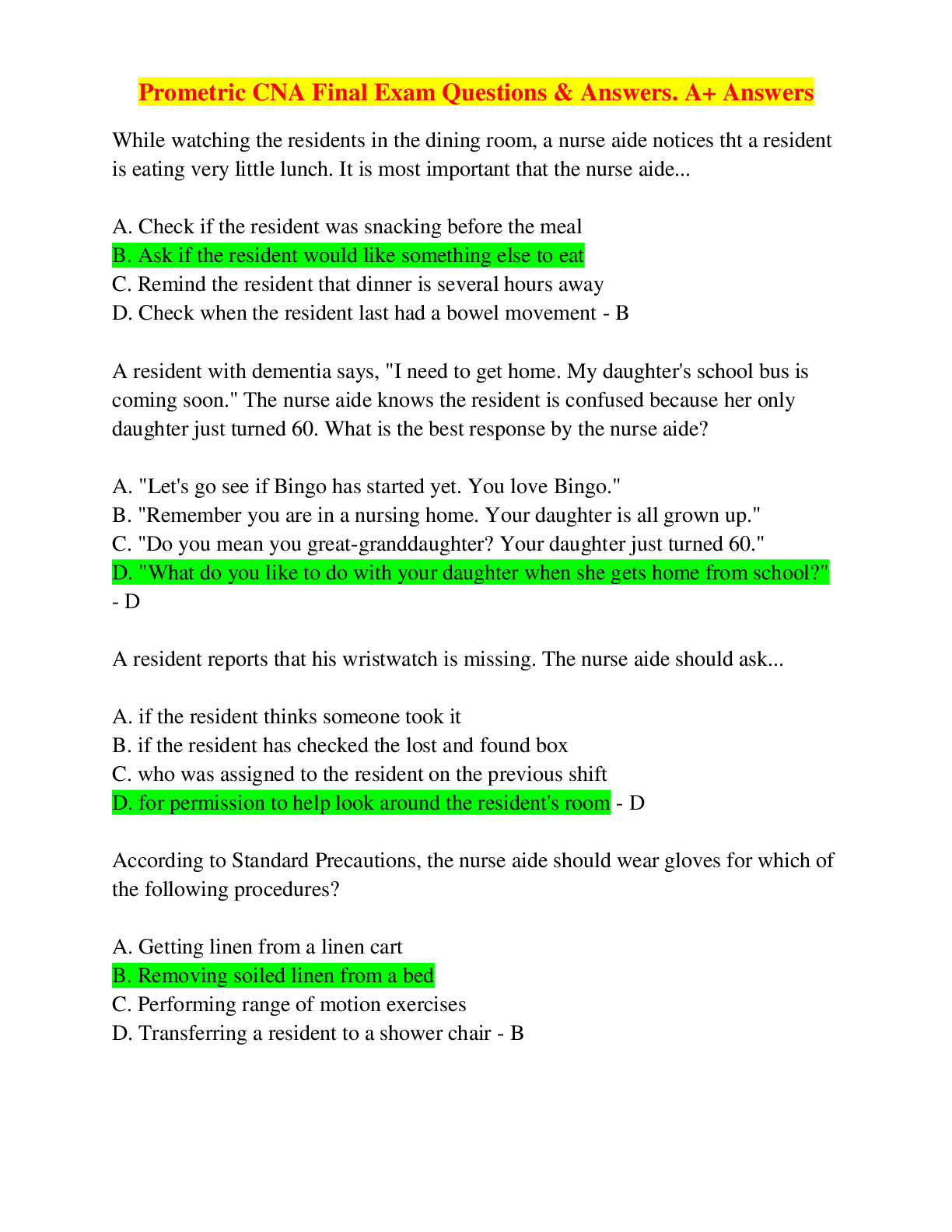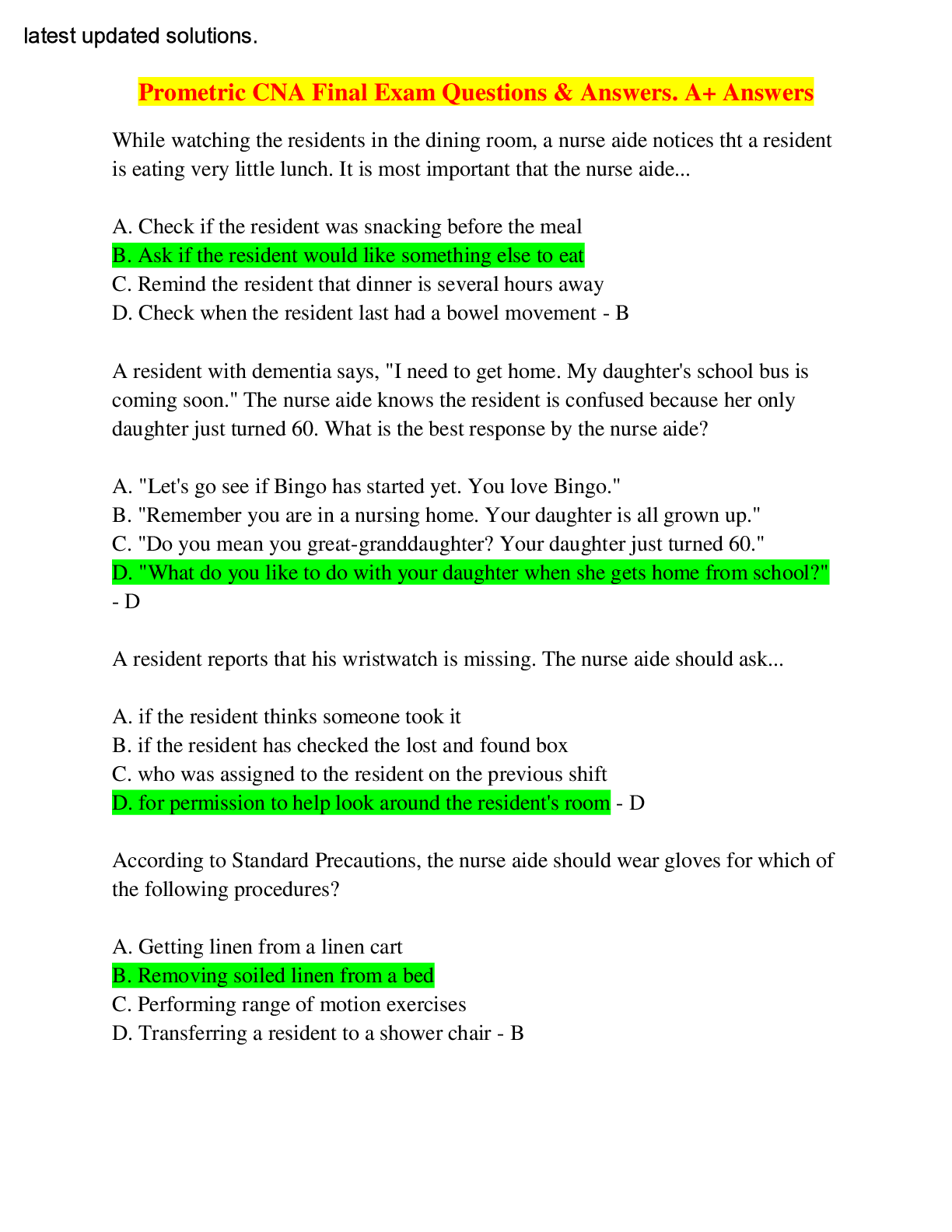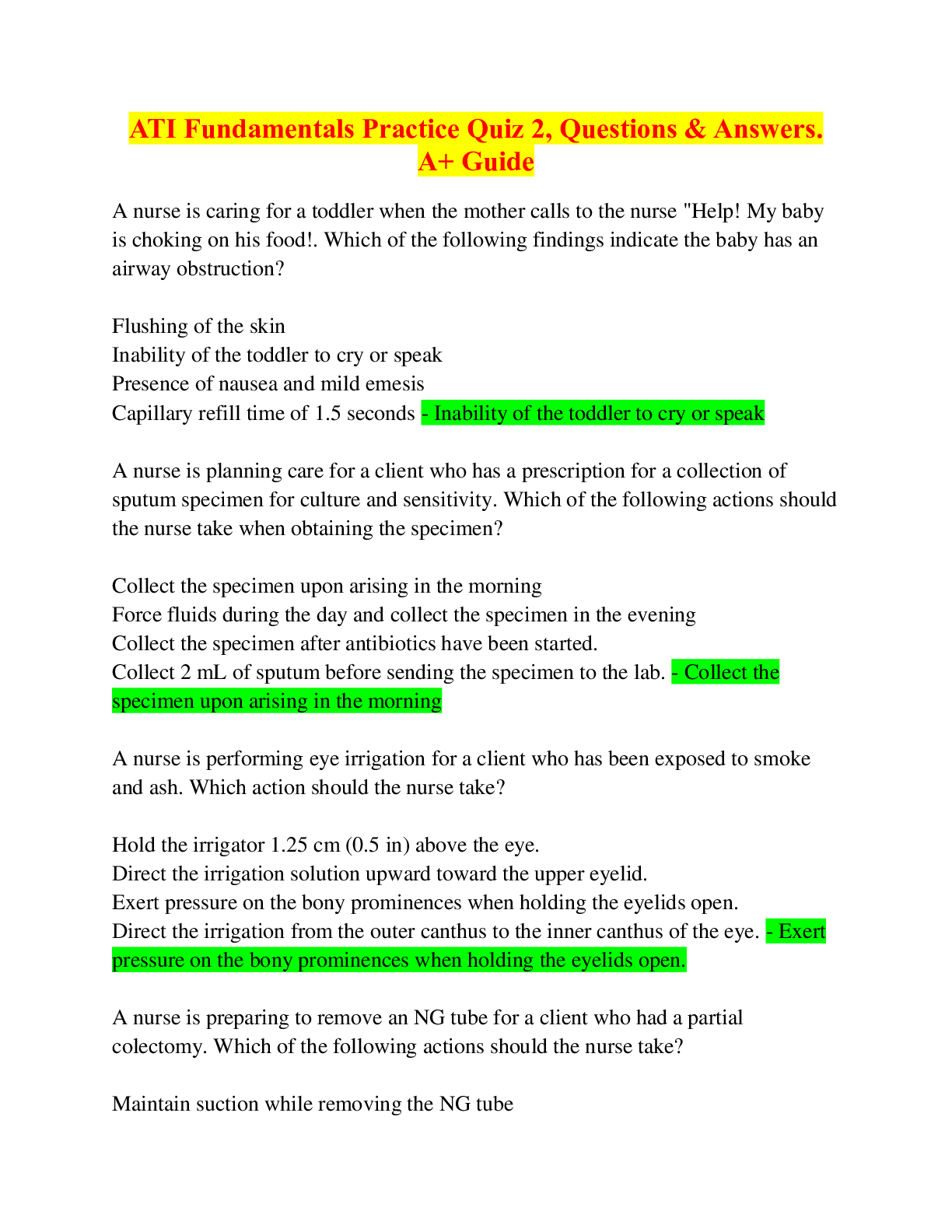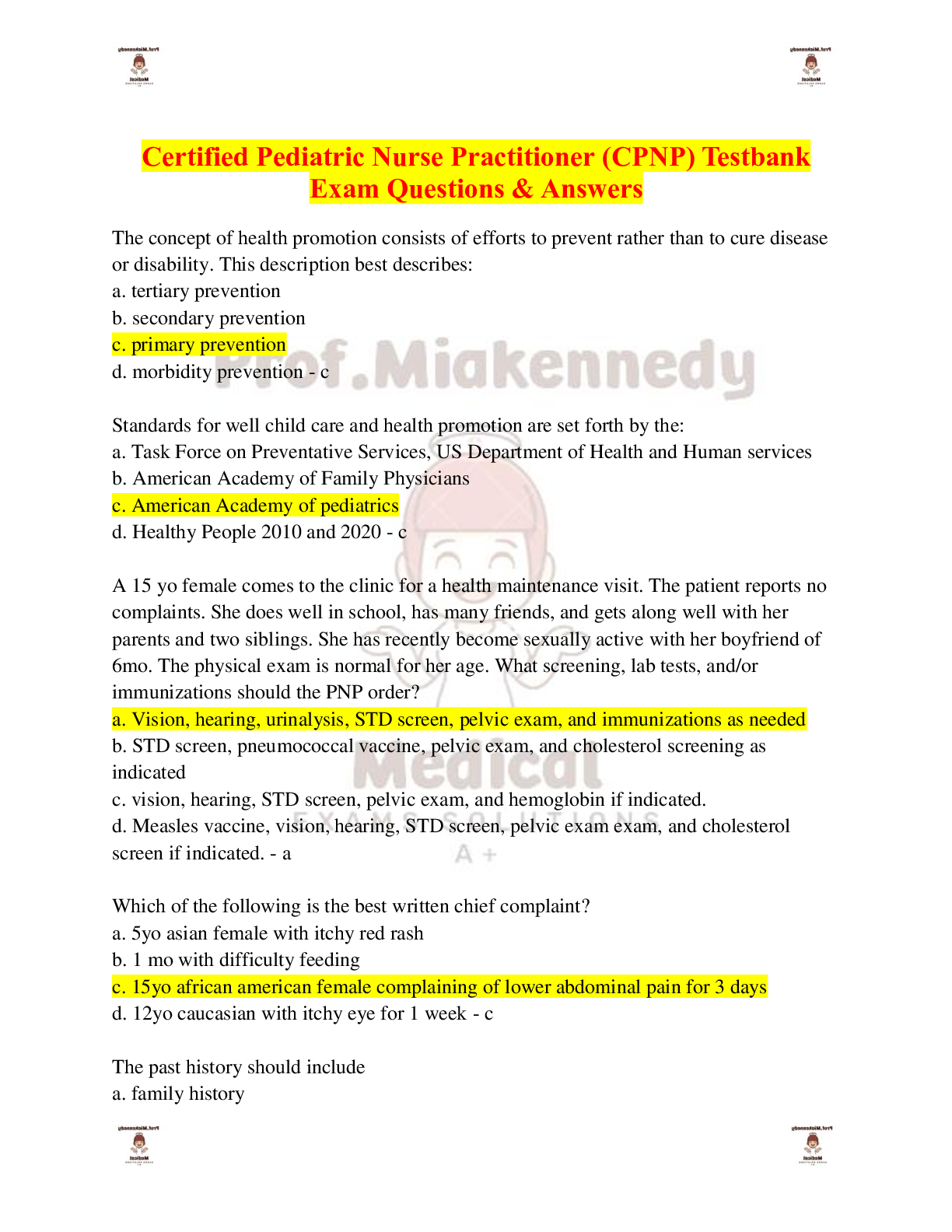IV therapeutics Testbank Exam Questions & Answers. A+ Rated
Document Content and Description Below
IV therapeutics Testbank Exam Questions & Answers. A+ Rated, A labor and delivery nurse is caring for a client who has just received epidural anesthesia prior to cesarean section. For which potential ... adverse effects of epidural pain medication should the nurse observe? a. Urinary retention, pruritus, and hypotension b. Pruritus, nausea, and urinary incontinence c. Polyuria, hypertension, and respiratory depression d. Respiratory depression, hypertension, and hemiparesis - a. Urinary retention, pruritus, and hypotension The primary problem associated with receiving epidural anesthesia is hypotension due to the blocking of sympathetic fibers in the epidural space. The decreased peripheral resistance that results in the circulatory system causes dilation of peripheral blood vessels. A simple measure that prevents most hypotension is the infusion of 500 to 1000 mL fluid intravenously into the client before the procedure. Urinary retention is a common side effect that may last 10 to 20 hours after the first injection. Pruritus is caused by the opiate's interaction with the dorsal horn, not by a histamine release, and is best treated with an antagonist rather than with diphenhydramine hydrochloride. Respiratory depression can occur when too much narcotic is being administered. A nurse, who is making rounds, notes that a client's lipid emulsion infusion is 1 hour behind schedule. Which action by the nurse is most appropriate? a. Adjust the line to run wide open until the solution is back on time. b. Leave the lipid emulsion at the present rate. c. Adjust the rate to catch up over the next 2 hours. d. Adjust the rate to catch up over the next hour. - b. Leave the lipid emulsion at the present rate. The nurse should not increase the rate of a fat emulsion to make up the difference if the infusion falls behind, doing so could place the client at risk for fat overload. The same principle applies to increasing the rate of the PN, which could suddenly cause hyperglycemia and fluid overload. A nurse specialist is performing placement of a midline catheter. Midline placement refers to a: a. peripherally inserted catheter with the tip location in the superior vena cava. b. peripheral catheter less than or equal to 3 inches in length. c. peripheral catheter that is between 3 and 8 inches in length with the distal tip dwelling in the basilic, cephalic, or brachial vein at or below the level of the axilla. d. catheter surgically placed into a vessel, body cavity, or organ and attached to a reservoir that is placed under the skin. - c. peripheral catheter that is between 3 and 8 inches in length with the distal tip dwelling in the basilic, cephalic, or brachial vein at or below the level of the axilla. Midline placement of a peripheral catheter is designed for intermediate-term therapies from 1 to 4 weeks. During a nurse's initial assessment of a client, the nurse observes that the client's IV solution is not infusing. Which intervention should the nurse implement first? a. Notify the physician. b. Inspect the tubing for kinks. c. Discontinue the IV infusion. d. Lower the height of the IV solution container. - b. Inspect the tubing for kinks. One of the most frequent causes of slowed or stopped infusion is kinked tubing, especially when infusion is by gravity control. The nurse's first action should be to straighten the tubing. The nurse should then check the flow and recalculate the infusion. A nurse is caring for a client who has a newly implanted port. For which complication, specifically associated with implanted ports, should the nurse observe? a. Air embolus b. Occlusion c. External catheter breakage d. Displacement of the septum - d. Displacement of the septum Implanted ports have a septum, which is also called port migration. The port is sutured but can move out of position if the sutures become loose or if the client's hand manipulates the port. Air embolus and occlusion can occur with a central venous device. External catheter breakage is specifically related to peripherally inserted central or tunneled catheters. Current Infusion Nursing Standards of Practice (2011) recommend which of the following for routine site care and dressing changed on short-peripheral catheters. a. Change dressings every 72 hours. b. Change gauze and tape dressings every 7 days. c. Routine dressing changes are not performed on PIV unless the dressing is soiled or no longer intact. [Show More]
Last updated: 8 months ago
Preview 1 out of 52 pages
Instant download

Buy this document to get the full access instantly
Instant Download Access after purchase
Add to cartInstant download
Reviews( 0 )
Document information
Connected school, study & course
About the document
Uploaded On
Sep 27, 2023
Number of pages
52
Written in
Additional information
This document has been written for:
Uploaded
Sep 27, 2023
Downloads
0
Views
36







